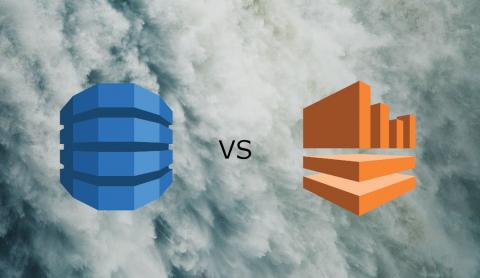Operations | Monitoring | ITSM | DevOps | Cloud
Latest News
Istio Routing Basics
When learning a new technology like Istio, it’s always a good idea to take a look at sample apps. Istio repo has a few sample apps but they fall short in various ways. BookInfo is covered in the docs and it is a good first step. However, it is too verbose with too many services for me and the docs seem to focus on managing the BookInfo app, rather than building it from ground up. There’s a smaller helloworld sample but it’s more about autoscaling than anything else.
LiveAgent: Help Desk Software with Unlimited Options
Customer service is trendy topic these days. After there was a boom around technology at the start of 21st century, the internet has settled down and now it’s more about the basics. Automation has taken huge part of the overall human resources and people are demanding human approach, even if it’s on the internet. Today we are going to review one of the oldest customer service software around, LiveAgent.
The future of tracing is open
At Datadog, we’ve always been committed to ensuring that our libraries and software that run on your systems are open source. We believe that transparency into how we collect data and integrate with your applications is key for building trust.
The Joker's in town. Time to secure your Android devices
Security experts from Google have discovered a new spyware in 24 Play Store apps that, combined, have more than 472,000 downloads. Researchers have stated that this spyware also has the capabilities of normal malware and appears to have infected certain apps in Google Play with more than 100,000 installations. Cybercriminals are deploying this spyware through the advertisement framework in those compromised apps.
How to Choose Your Cloud Provider
With the emergence of Amazon Web Services (AWS) in 2002, the Infrastructure as a Service (IaaS) model kickstarted the public cloud revolution that has permanently changed how IT services are deployed and delivered. According to Gartner’s July 2019 Magic Quadrant for Cloud Infrastructure as a Service report, the annual cloud IaaS market is currently worth $41.4 billion and is expected to grow to $81.5 billion by 2022.
It Takes a Village
Rancher Rodeos are great events for learning Kubernetes and Rancher beginner-level concepts, with attendees gaining just the right amount of knowledge to get started with provisioning Kubernetes clusters and launching applications. I present frequently at Rodeos, and the scene typically unfolds like this: together with attendees, we are walking through Rancher features, and usually as we’re experimenting with Monitoring, Alerting, and Logging, I see the wheels start turning in their heads.
How to automatically pause Google Ads campaign when your site gets down?
With current advertisement pricing you probably wish to be sure about its efficiency. Therefore, when running campaing the one who orders it wants to know for sure that nothing will interrupt it. But in real life, even the most reliable web sites sometimes fail. So the question is: how not to lose money when it happens? Let's check what are the pitfalls and how can we solve this problem with HostTracker website availability service. Should we trust Google? Well, we know about the problem. What's next?
What is Synthetic Monitoring?
Organizations depend on fully functioning IT systems and processes to attract customers, deliver services and manage internal operations. The operation of these systems and processes directly impacts the business and reputation of each organization. Ensuring that all IT systems and processes are fully functional 24×7 is a key component of any organization’s IT performance management strategy. This is where synthetic monitoring comes in.
The best reason to use DynamoDB streams is...
Many clients have asked me, “When do I use DynamoDB streams vs Kinesis?” It’s a great question, since both services are very similar, especially when you process their records with Lambda functions. So let’s break it down and look at the key differences between Kinesis and DynamoDB streams. When it comes to streaming and processing real-time events on AWS, Kinesis is the de facto solution in AWS.










